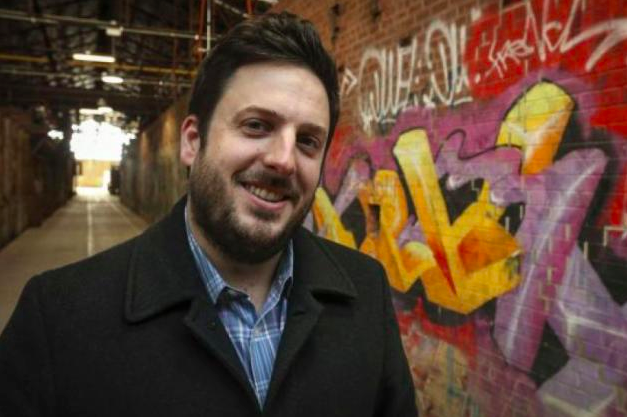
John Brodhead and Dina Graser of Evergreen City Works co-authored this post. They’re working together on the Tower Renewal Community Benefits Agreements Research Project supported by the Atkinson Decent Work Fund.
A movement is afoot in Toronto to ensure local communities reap the benefits of major infrastructure and housing projects. Called “community benefits”, the concept is simple: leverage dollars already being spent on major infrastructure and housing developments to provide jobs and training to those who need them, open opportunities for local suppliers, and help provide more community amenities.
Community Benefit Agreements, or CBAs, are not new – there are precedents in the U.S., the U.K., and even in Canada, most notably at the Vancouver Olympic Village Site. In Toronto, Metrolinx signed a Community Benefits Framework with the Toronto Community Benefits Network in 2014 for the Eglinton Crosstown LRT project.
At Evergreen CityWorks, with support from the Atkinson Foundation and Metcalf Foundation, a team working on a pilot Tower Renewal project is considering how to implement community benefits as part of its business model. Tower Renewal will use the proceeds of infill development to subsidize energy retrofits of aging residential towers, as well as to expand community-led opportunities for economic diversification and social infrastructure. So, we are targeting employment opportunities for the tenants of existing towers – many of whom may be low-income – and will be engaging tenants to determine other benefits that could be provided through the development.
That said, we face a scope issue with Tower Renewal. Most projects that incorporate CBAs have budgets that start in the hundreds of millions of dollars and extend for a period of several years. The Vancouver Olympic Village, for example, was a billion-dollar project that lasted two years; the Eglinton Crosstown will cost over $4B and will take at least another 5 years to build. In contrast, an infill development on a single tower site could take as little as six months to construct and the budget will be in the millions – not hundreds of millions. As a result, the number of jobs that can be created on any one tower site is limited, and the timeline within which construction will take place is relatively short.
To a certain extent, community benefits are individualized to each project, and should result from a transparent, inclusive engagement process with the affected community – be they tenants, local residents of a neighbourhood, or small businesses. However, the common theme in almost all CBAs is the creation of employment opportunities for low-income, historically disadvantaged or targeted groups of people. So why create a separate workforce strategy for each agreement?
If we want to promote the systemic adoption of CBAs, let’s make it as easy as possible for both jobseekers and employers by creating a workforce development hub for community benefits. Such a hub would partner with a variety of community organizations and agencies to identify, engage and recruit job-seekers from targeted communities; coordinate pre-apprenticeship and apprenticeship training, and placements; ensure the provision of wraparound supports for those who need them while on their first job, such as at-risk youth; and most importantly, provide a one-stop shop for employers. Experience in other jurisdictions has shown that having one agency coordinate the recruitment, training and preparation of applicants is key to an employer’s ability to meet its workforce commitments in a CBA. Making it easy for employers will be key to the success of a CBA workforce strategy, and will encourage greater use of CBAs across the region.
